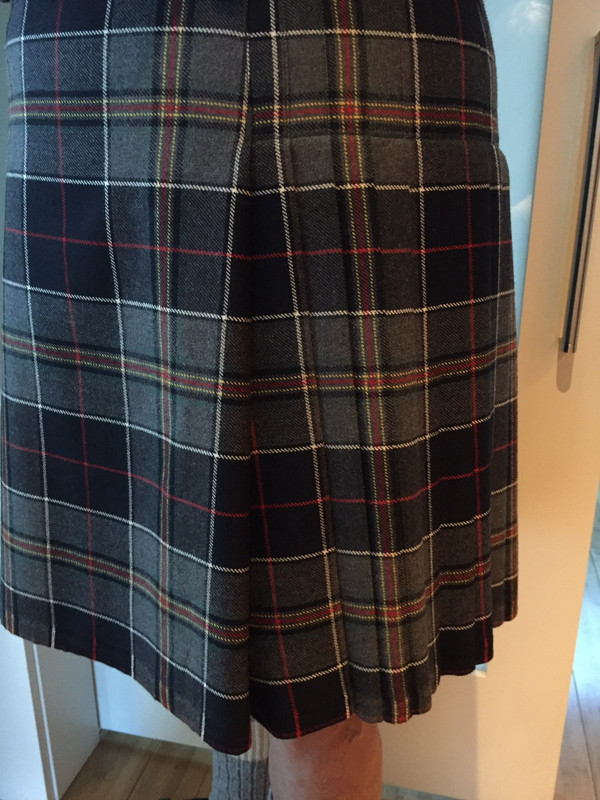X Marks the Scot - An on-line community of kilt wearers.
|
-
Making a kilt from P/V
Are there any special considerations for adapting The Art of Kiltmaking's methods to P/V?
In checking into this, I found this thread:
http://www.xmarksthescot.com/forum/f...pv-kilt-94290/
...which seems to suggest that the apron taper needs to be a straight line and that the splits don't really need to be changed. But that thread's a few years old at this point. Any new advice on the subject?
-
-
P/V or a fabric that is a blend of Polyester and Rayon makes a very nice kilt. But you must understand the characteristics of the material you are working with, and how to use those characteristics to achieve the best results.
Wool has an amazing ability to be molded into complex shapes with heat in the form of steam. We can mold wool into a 3 dimensional shape very easily.
P/V being a synthetic blend is a bit more stable. It does not deform as easily as wool. And it also reacts to heat differently. At the heat of steam P/V will soften almost to the point of melting. But once cool that shape hardens and becomes almost permanent.
So while you can create the curved apron edges in P/V that are on of the hallmarks of the Traditional kilt it does not take the curve as easily. So yes, quite often the apron taper is made from straight lines. Appearing like a Traditional kilt that is machine stitched. The aprons will taper from the waist out to the hip and then continue in a straight line down to the selvedge instead of curving back in towards the center like a wool kilt.
This means that the width of the apron is the same at the waist and hip but significantly wider down at the selvedge on an apron with straight lines.
The splits are another matter altogether. The splits have to do with the measurements you take of the body you wish to fit and how the fabric will drape and flow when folded into pleats.
The way splits are calculated has been developed over the years from experience. Traditional splits just produce the best looking result.
You can almost always tell when someone is not familiar with how to determine Traditional splits. If the apron is too narrow the result will be gaping at the sides, puckers at the hip line and apron tips that kick forward.

If the back is too small or too large you will see either large shower curtain folds or a panty line.
Last edited by Steve Ashton; 6th July 21 at 02:38 PM.
-
The Following User Says 'Aye' to Steve Ashton For This Useful Post:
-
 Originally Posted by Steve Ashton

If the apron is too narrow the result will be gaping at the sides, puckers at the hip line and apron tips that kick forward.
I've seen that happen before, so I think I know what you're talking about. Anything else (other than the straight sides on the apron) that would need to be modified?
Also: any progress on your book?
Last edited by MichiganKyle; 9th July 21 at 01:26 PM.
Reason: Clarifying a bit
-
 Posting Permissions
Posting Permissions
- You may not post new threads
- You may not post replies
- You may not post attachments
- You may not edit your posts
-
Forum Rules
|
|


















Bookmarks